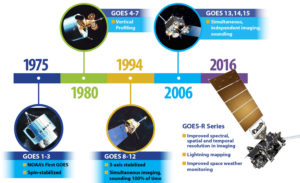FLVS Attends GOES-R Satellite Launch
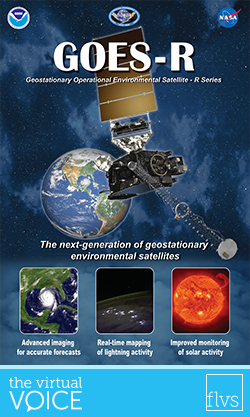 On Saturday, November 19, I had the privilege of watching the GOES-R weather satellite launch from Kennedy Space Center.
On Saturday, November 19, I had the privilege of watching the GOES-R weather satellite launch from Kennedy Space Center.
Now you may be wondering what GOES-R stands for. It’s the Geostationary Operational Environmental Satellite, a satellite system that orbits the earth and sends data back to National Weather Service computers. The R indicates what number or version the GOES satellite is on, so there have already been versions A-R. GOES-S is slated to launch next year and is the twin to GOES-R.
Of course, weather satellites get launched all the time, so why would this one be any more special than the others?
Well, right now we receive images of satellite scans every 30 minutes or so. The GOES-R satellite will provide data at least every five minutes, and in some circumstances every 30 seconds! So not only will it be five times faster than current weather satellites, but it will also gather three times more data and it will have four times better resolution.
It really takes a team effort to put this billion-dollar satellite into orbit. NASA works side by side with the NOAA, which stands for the National Oceanic and Atmospheric Administration, as well as the United Launch Alliance, which builds the rockets. So far, the United States has spent $11 billion on weather satellites to revolutionize forecasting and save lives.
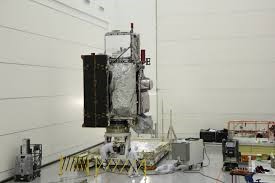 GOES-R Satellite |
In Florida, we rely on weather satellites during hurricane season to help us give a more accurate idea of where the hurricane is headed. Now remember, not all weather predictions are always right – they are just predictions and not set in stone. But when we have better instruments, we can make those predictions more precise. This weather satellite will also help track severe weather across the United States, helping save lives.
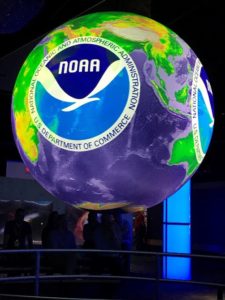 NOAA globe, Kennedy Space Center |
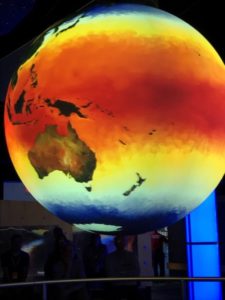 Science on a Sphere |
During my two days at Kennedy Space Center, I was able to see some really amazing behind-the-scenes things. For instance, I was able to visit the 45th Weather Squadron at the Cape Canaveral Air Force Base. This is where all of the weather observation takes place and the Squadron Commander has the power to launch a rocket or to keep it on the ground based on the weather.
I also learned about different types of weather events you might not think about that could keep a rocket on the ground. Those included different types of lightning and wind speeds that are vital to know to make sure that a rocket safely launches. During our tour, we were told that the worst case scenario when launching a rocket is not just that it explodes, but that Mission Control loses the ability to control it remotely and it goes over populated areas, potentially putting people in danger.
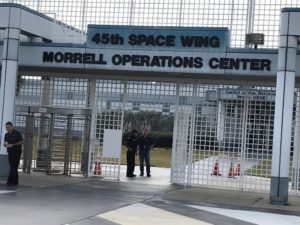 Morrell Operations Center |
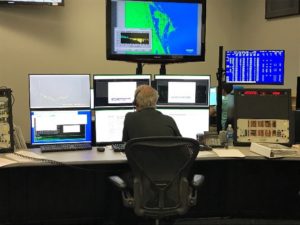 Head meteorologist for the GOES-R launch |
Our group was also able to meet two really cool astronauts who flew in space at very different times. The first was a Skylab astronaut from the 1970s and the second flew on the shuttle in the 1990s and he helped fix the Hubble space telescope.
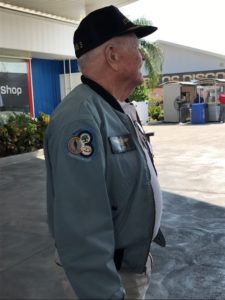 |
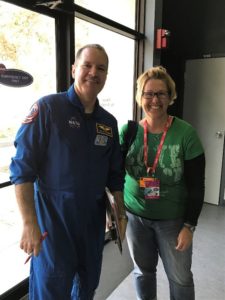 |
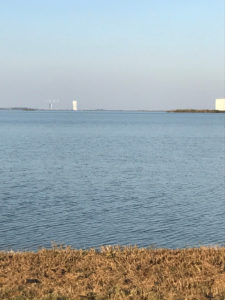 |
One of my favorite stops on this two-day tour was the United Launch Alliance facility and seeing the rockets being assembled. Now this is top secret stuff and we were not able to write anything down on paper, take any pictures, or have electronic devices out. I was trying to remember everything that I saw, but alas, I was so excited to be seeing this amazing technology, I forgot most of it! I did see an atlas rocket being assembled and found out that its launch date is on my birthday, January 19. So that one was an easy one to remember. That makes a cool birthday gift, right?!
The first photo below shows the two types of rockets that ULA produces: The Delta and Atlas V Models.
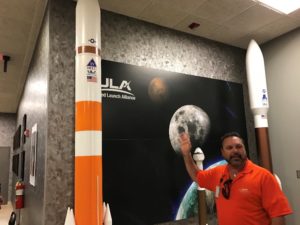 Delta V and Atlas V models |
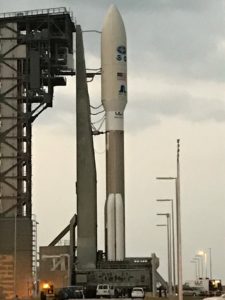 Atlas rocket & GOES-R ready to launch! |
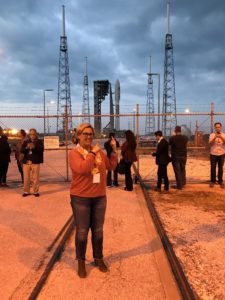 Look how close we are! |
We also made a trip to the VAB, which stands for the Vehicle Assembly Building, where they used to assemble rockets. This is a huge building, and even the word huge doesn’t do it justice. The United States flag painted on the building is bigger than a school bus, just to give you some perspective. We were able to go up to the 16th floor and view the building from that level which was pretty high up!
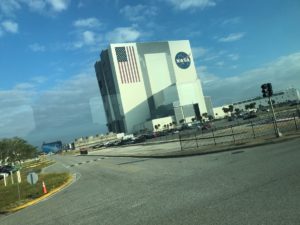
Our tour guide that I knew from the Osiris-REx launch told me to hang back as we went up on the elevator because he wanted to show me something special. Little did I know the room that he would take me to would cause such emotions.
This room houses the remnants from the Columbia shuttle disaster. I did not take any pictures, but just paid my respects.
On the day of the launch, we had some free time to be tourists at the Kennedy Space Center, so a group of us did just that. We were like kids on Christmas morning playing and laughing with pure excitement because, well SPACE!
There’s an exhibit called Destination Mars. It makes you feel like you’re actually on the surface of Mars with the help of images from the Martian Curiosity rover. It really was the coolest 10 minutes ever!
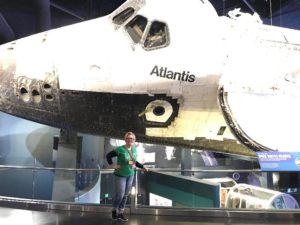 |
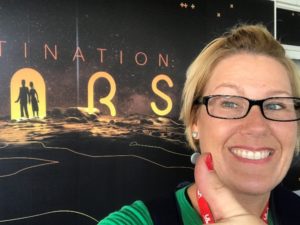 |
We also went to the Astronaut Memorial and paid our respects to the Challenger and Columbia Astronauts. Around the corner from where the astronauts have framed photos with their biography are two displays of Challenger and Columbia.
Challenger had a side piece of the shuttle with the American flag on it and Columbia had the burned out windows of the shuttle.
In our group, they were people ranging in age from 20 to 60 years old and yet we all shared our stories of what we were doing on the days that both shuttles failed…one at take-off and the other when coming into the earth’s atmosphere to land.
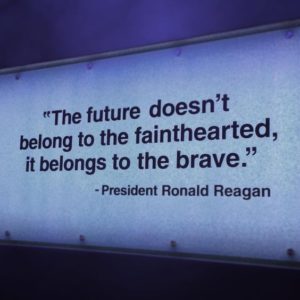
After our emotional roller coaster of a day, we all gathered on our NASA bus and took a photo on the causeway to wait for the launch.
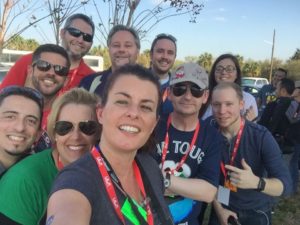
Now there is only a certain window of time when a rocket can launch. There are lots of factors that go into determining this launch window. We had a one-hour window, starting at 5:42 p.m. If the rocket did not get off the ground by 6:42 p.m., it would’ve been delayed until the next day at the earliest. There were people from all over the world in our group that came for this launch who were leaving on Sunday, so we all wanted to see the rocket go up!
Delay after delay kept happening – and then finally, at exactly 6:42 p.m. (the moment the launch window closed), the GOES-R satellite launched, thanks to The Atlas V rocket giving it a boost up into space.

Lift-off!
It was quite emotional, as most launches are for many people, and after we dried our tears we hugged and smiled and cheered. OUR rocket had successfully launched and our hearts will always have a special place for the GOES-R weather satellite!

